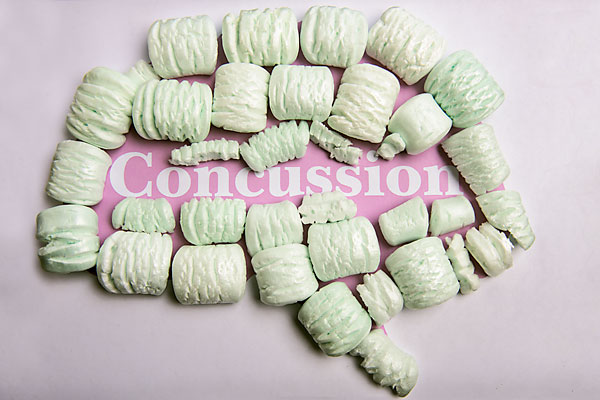Traumatic brain injury and adult epilepsy

When someone suffers a traumatic brain injury, his or her chance of developing post-traumatic epilepsy (PTE) is about 15 to 20 percent. There are a few known risk factors, but no definitive reason why some people begin to have seizures and others do not. Although it only represents about five percent of total cases of epilepsy, PTE is a major problem both because it is often not controlled by anti-seizure medication and because those with the condition have shorter life expectancy than others with a traumatic brain injury who did not develop epilepsy.
Now, new research from the Texas A&M Health Science Center College of Medicine hints that PTE might be tied to the body’s own immune response.
Post-traumatic epilepsy is when someone who didn’t previously suffer from epilepsy has at least two seizures at least a week (and sometimes as long as months or years) after a traumatic brain injury (TBI).
The more severe the brain trauma is, the more likely a person is to suffer from PTE. The type of damage may also play a role: individuals who suffer depressed skull fractures, penetrating head trauma, cerebral contusion and hematomas (bleeding within the brain) due to the injury are especially likely to suffer PTE. Injuries that occur in military settings carry higher-than-usual risk for PTE, probably because they more commonly involve penetrating brain injury and brain damage over a more widespread area.
The location of the injury in the brain may also make a difference: when contusions occur in both hemispheres, the risk is 26 percent for the frontal lobes, 66 percent for the parietal and 31 percent for the temporal. There might also be genetic factors, but these are poorly understood.
The answer to why similar injuries can have such different outcomes may lie in the differences between individuals’ immune responses.
Under normal circumstances, the brain is an “immune-privileged site,” meaning it is protected from most pathogens (and the rest of the immune system) by the blood-brain barrier. In cases of trauma, though, this protection disappears, and the inflammation from the injury calls in the troops of the immune system, so to speak. There is some evidence to suggest that it is this reaction that leads to seizures.
Therefore, it might be logical to suggest that by selectively targeting components of the immune response that can suppress inflammation after TBI, researchers might be able to prevent PTE. M. Karen Newell Rogers, Ph.D., the director of the Scott & White/Texas A&M Health Science Center College of Medicine Center for Cell Death and Differentiation, who trained as an immunologist, may be uniquely positioned to do just that via teaming up with her collaborator, Lee Shapiro, Ph.D., an associate professor in the Department of Surgery at the College of Medicine and the Neuroscience Institute at Baylor Scott & White.
“I’m not an epilepsy expert; I’m not even a brain trauma expert,” said Newell Rogers, who is also the Raleigh R. White, IV Endowed Chair of Surgical Research. “I just happened to ask the question, ‘Is it possible that the immune system directly contributes to the epilepsy that results from brain trauma injury?’ and that’s where it becomes novel.”
Newell Rogers knew that answering this seemingly simple question would require her to step outside her field a bit. That’s why she teamed up with Shapiro, who does specialize in epilepsy. Together, they hope to eventually develop a therapeutic that stops the inflammation in the brain, but first, they need to understand how the inflammation works on a molecular level.
The duo has recently received a two-year grant from the Citizens United for Research in Epilepsy (CURE) that they hope will help them study those molecular mechanisms involved in inflammation and how they contribute to epilepsy. One type of protein they think might be important is the major histocompatibility complex (MHC). “The immune system has evolved some special points that determine whether cells live or die,” Newell Rogers said. One of those ways is the protein invariant chain CD74, which is involved in the formation and transport of MHC proteins and a form of which plays a key function in all vertebrate immune systems, from humans to sharks.
“We hope that by learning more about this mechanism, they will be able to prevent or reverse chronic, inflammatory syndromes, including post-traumatic epilepsy,” Newell Rogers said. “People with traumatic brain injuries have enough problems without having to worry about seizures too.”
Media contact: media@tamu.edu


